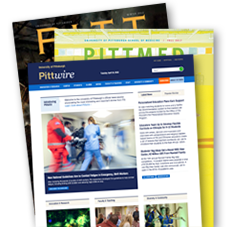UNIVERSITY OF PITTSBURGH RESEARCHER STUDIES EFFECTS OF NICOTINE PATCH IN "REAL TIME"
PITTSBURGH, August 8 -- Using a unique research tool, a University of Pittsburgh professor of psychology has determined that a 24-hour over-the-counter nicotine patch yields consistently better relief from morning cigarette cravings than the 16-hour patch. The 24-hour patch also yields more relief throughout the rest of the day.
Professor Saul Shiffman, a renowned expert on the subject of addictions and cravings and on the measurement of patient experience, describes his findings in the August issue of the international academic journal Addictions. Morning cigarette cravings are important to study, he says, because other research indicates those episodes trigger relapses into smoking. This research aimed to see if differences in delivery of nicotine into one's system would actually result in differences in cravings and/or withdrawal symptoms.
In the study, 244 smokers who suffered morning cravings, but who were trying to quit, were assigned randomly to a 16-hour or 24-hour patch. All participants wore 2 patches during the day, one active and one placebo, and one patch while sleeping -- active for the 24-hour group and a placebo for the 16-hour group. "We didn't want people to react psychologically to the fact that they were or were not receiving nicotine while they slept," noted Shiffman.
Each participant was also assigned a hand-held computer called a Patient Experience Diary (PED), with a built-in alarm clock the participant set upon going to bed and awoke to each morning. Throughout the morning and the rest of the day, the participant would respond to random audible beeps from the PED. At each beep, the computer flashed a series of questions on its screen. For example, how restless do you feel now? How irritable do you feel? The participant answered these questions on a scale of 0 to 10, and, in addition, enter his or her own periods of craving or withdrawal symptoms into the PED.
The most striking results were in craving intensity. The 24-hour patch cut participants' craving in half, compared to the 16-hour patch. In addition,
24-hour dosing cut by at least one-third the time period the person experienced the craving, and reduced the frequency of the urge to smoke.
"This is one of the first studies that has been able to show the difference between the two patches using a technique that is sensitive enough to capture a valid and detailed profile of a person's experience in real time," said Shiffman.
"Too often in research, we impose artificial restraints on participants to force them into our protocol," he explained. "This method, using the PED, allows the research to fit to the patients' natural rhythm, to capture what really happens."
According to Shiffman, patient questionnaires about cravings a patient may have had days before can yield biased or inaccurate results. He said he feels a patients' own home or workplace is a more natural setting for a study, than a clinic or laboratory. "By using technology, we were able to capture a person's fleeting momentary experience that is clinically very important," he said. "In the future, more and more key research data is likely to be collected in this way."
Saul Shiffman is available for interviews by contacting Sharon Blake at (412) 624-4364 or Yolanda DiBucci at (412) 383-2050.
-30-
8/8/00/mgc
Media Resources
Schools of the Health Sciences Media Relations
For more information about Pitt's schools of dental medicine, health and rehabilitation sciences, medicine, nursing, pharmacy, and public health, click here >
To locate stories from health science schools prior to 2013, visit the UPMC news archives »
Urgent Question?
University of Pittsburgh news reps are available to answer urgent media inquiries. Outside of regular business hours (Mon-Fri, 8:30 a.m.-5 p.m.), please email us at media@pitt.edu.
News reps for University of Pittsburgh Health Sciences schools can be reached outside of regular business hours through the paging operator at 1+412-647-2345.


